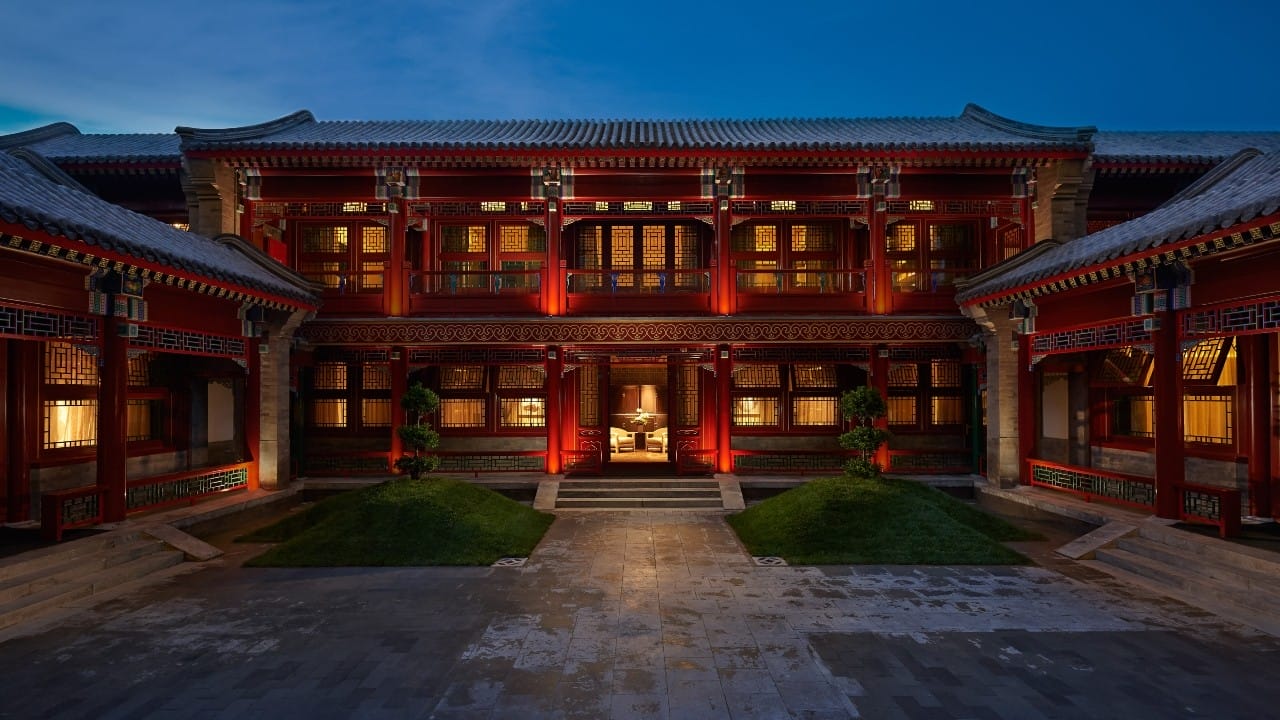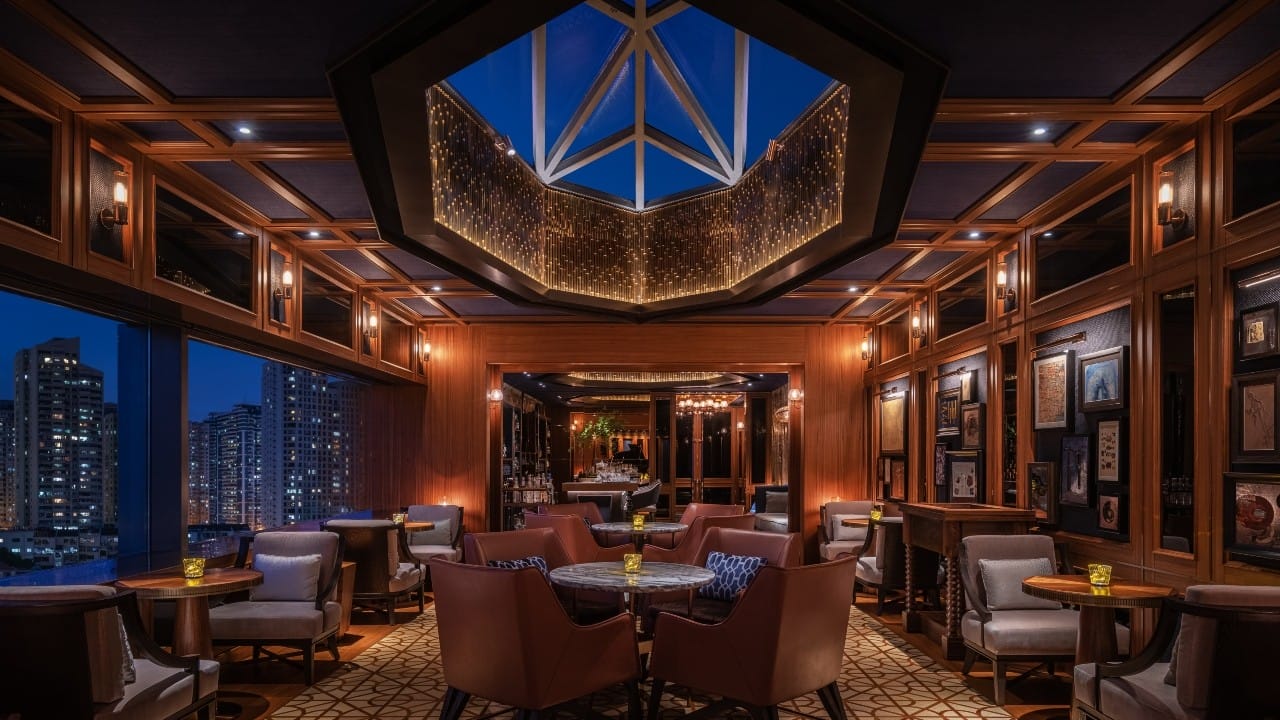Megalopolises around the world all have their own charms and quirks, at scales that have to be experienced to fathom, but they’re eventually manageable and navigable with a bit of help from humans and technology alike. But nothing prepares you for the sheer immensity and intensity of Beijing. Regardless of how much people, cars, bicycles, buildings, lights, sounds, and stimuli you think you’ll be confronting, China’s capital relentlessly throws more and more and more at you. Yet, in a place one would expect the frenetic energy of China’s rapid rise to a global superpower to be hypercharged beyond what humans can bear, I check-in to a beloved bastion of luxurious hospitality. It’s a regal haven, comfortable and contemporary, yet boasting history and culture if you know where to look—especially as The Forbidden City is just a short walk away. The Waldorf Astoria Beijing is a superlative sanctuary for the discerning, and the perfect jumping-off point for a tourist like me to get a taste of the finest China has to offer.
Cities like to say that so-and-so neighbourhoods are their respective ‘heart of the city’, but The Forbidden City imperial complex is unequivocally the epicentre of Beijing, covering 178ac and comprising almost 10,000 rooms. The Waldorf Astoria Beijing, just a kilometre away, obviously can’t compete with such grandiosity, but its staff will do their best to help you feel like royalty. The hotel has a total of 175 rooms, of which nine in the main building have terraces with wondrous city views. Its main building has a facade of bronze and glass (from US$399 for a King Deluxe room per night) designed by Adrian Smith + Gordon Gill Architecture, so that the 12-storey building resembles a jewel box, like one an empress may have on her dresser.

The next building over is the Hutong Courtyard, which is inspired by Ming Dynasty architecture, and features three suites, a two-bedroom suite, and a villa. The latter has two bedrooms, its own garden courtyard, terrace, dining room for 12, and private pool and sauna. When you see it, you’ll feel like you’re supposed to be in a museum compound; but when you immerse yourself in its cutting-edge amenities and facilities, you’ll know exactly that you’re in a Waldorf Astoria.
View more photos of the presidential suite
“The Hutong Courtyard is my favourite thing about the hotel. I remember first coming here and walking through that space—I was amazed,” says Candice D’Cruz, vice president of luxury brands at Hilton, Asia Pacific. “Being able to sit and relax in a courtyard, surrounded by tall buildings everywhere—whether you’re here in Beijing or anywhere else in Europe, for example—it helps you pause. I’m so happy that we could celebrate the hotel’s 10th anniversary there.”
My chat with D’Cruz is the day after the anniversary gala, which featured a four-hands dinner of Heinz Beck from the three-Michelin-starred La Pergola in Waldorf Astoria Rome and James Wang from one-Michelin-starred Zijin Mansion here in Waldorf Astoria Beijing. Guests were dressed to the elevens for the occasion, which also saw the opening of the Remount to Decade art exhibition by artist Ling Jian. His Court Guard painting has been proudly displayed on the first floor ever since the hotel opened, and I highly recommend checking out his other works at the exhibition (on until 12 December this year), as well as the many other pieces dotted around other floors of the hotel.
View more from the Remount to Decade art exhibition by artist Ling Jian
No stay at the Waldorf Astoria Beijing would be complete without booking a table at Zijin Mansion, where chef Wang curates a delightful menu of authentic Cantonese cuisine and Beijing specialties. Come with an empty stomach, because you have to try as much as you can, including the Double Boiled Aged Chicken Soup, Pan-fried Cod Fish with Chardonnay Sauce, Braised Pork Ribs with Preserved Vegetables in Hakka Style, and dim sum (ask the chef to recommend the house specials and crowd favourites). Zijin Mansion also houses a collection of more than 400 wines from all over the world, but if even all that’s not tickling your fancy, head down to Peacock Alley, to transport yourself back to early-20th-century New York.
View more from the 10th Anniversary Gala
And that’s part of the proposition that makes the Waldorf Astoria Beijing so special. All over the hotel, it pays homage in equal measure to Beijing traditions, Chinese art, and Asian craftsmanship as well as Waldorf Astoria elements that regulars will notice at its outposts all over the world and throughout its 131-year history, such as the Lobby Clock. It’s a feeling reflected in its super-central location—whether you want to dive into millennia of history at the nearby Forbidden City, Tiananmen, and National Museum of China, or if you want to treat yourself at the even nearer Wangfujing pedestrian street that’s filled with luxury boutiques and trendy stores. “We always try to incorporate local storytelling, but it’s also important for us to have Americana in the hotel as well. That’s where the brand was born and we want to make sure that we take it global,” D’Cruz explains. “We want to ensure that we marry Americana with local history, traditions, and artforms.”
So, I’m not surprised that the Waldorf Astoria Beijing has been such a mainstay in the upper echelons of luxury hospitality for the past decade for both Chinese and international guests. It continues the vision and mission of William Waldorf Astor and John Jacob Astor IV superbly, and is even creating a new legacy for itself. But now, it’s time to head south to the newest Waldorf Astoria family member in China, to really understand why the brand is so venerated in the country.
D’Cruz earlier told me that the Waldorf Astoria brand is very selective at choosing its locations—Shanghai and Chengdu are the other two—but even by their standards, the Waldorf Astoria Xiamen is on another level. Located in the island city’s Siming district and 9km from the Xiamen Gaoqi International Airport, the hotel’s neighbours include terraced houses, lived-in apartments, mom & pop stores, a middle school, and Lianhua Park, a cozy community gathering place. There are no convention centres, corporate headquarters, or manufacturing facilities nearby, let alone tourist attractions. But when you consider that the hotel likens itself to a ‘grand garden mansion’, you’ll understand what’s on offer here.
View the rooms of the Waldorf Astoria Xiamen
It opened in 2020, and fuses Nanyang-inspired aesthetics with neo-classical sensibilities. Circular motifs are everywhere, whether in its six dining establishments or its 245 rooms, symbolising harmony, togetherness, and the union of the aforementioned Americana and Xiamenese design cues. The rooms start from 55 sq m and feature floor-to-ceiling windows as well as clever, ‘if you know you know’ references to Chinese traditions (from US$194 for a King Deluxe room per night). For instance, the long bench by the desk is inspired by Chinese tea ceremonies, while Chinese coin silhouettes are used in room dividers as well as on wall motifs. As Xiamen is renowned for its tea and tea culture, tea-centric beverages and snacks that pair well with them are refreshed in your room daily.
View more of Hokklo, the Waldorf Astoria Xiamen’s premier restaurant
Begin your day with breakfast at the all-day dining Brasserie One, where you really need to try Shacha Noodles ‘Xiamen Style’—you’ll swear it’s like laksa’s long lost cousin. Meanwhile, Hokklo is the Waldorf Astoria Xiamen’s premier restaurant, serving Fujian cuisine via contemporary, traditional, and rare dishes, and complemented with traditional tea service as well as Chinese liquors. The Steamed Dongshan Rock Fish is as tantalising as the Xiamen Gaoliangwang Pineapple Cocktail is potent. For a more ultra-exclusive option, The Chef’s Table at Hokklo seats up to 12 and offers a fully customisable menu for guests. Then, end your night at 1387, the hotel’s very own ‘speakeasy’ with an impressively varied selection of whiskies and cognacs, as well as classic cocktails and fine wines. Dressing like you’re an extra in The Great Gatsby is not required, but probably encouraged.
When in Xiamen, one must include a visit to Kulangsu, or Gulangyu or Gulang, which is a pedestrian-only neighbouring island that is also a UNESCO World Heritage Site. Its history goes all the way back to when Xiamen was opened as a commercial port to the outside world in 1893, with Kulangsu then established as an international settlement in 1903. Today, you can still see, touch, and taste the melting pot of early 20th century Western aesthetics, Art Deco, and traditional southern Fujian styles. This multicultural melange is affectionately known as Amoy Deco Style and, no, it doesn’t mean the same as that Malaysian slang word. You could get to Kulangsu on a public ferry, or the Waldorf Astoria Xiamen’s concierge could arrange a private transfer, private yacht, and private guide to explore the island in style (price on request).

The Waldorf Astoria Xiamen may be the new kid on the luxury hotels block, but like the 10-year-old Waldorf Astoria Beijing, it fulfils its brand promise impeccably—providing a personalised luxury stay to the very highest standards. It respects its rich heritage but doesn’t repeat it ad nauseam. It applies contemporary stylings all throughout but infuses them with the soul of its location. And, most crucially, its hotel staff are sincere and courteous down to a fault, from the general managers to the housekeeping staff. Even if you don’t speak an iota of Mandarin (yes, that’s me), they will all go out of their way to ensure you are well attended to and cared for. Luxe, glamour, and opulence will only get you so far, so maybe that’s really the secret X-factor that Waldorf Astoria has that makes it such a grande dame in luxury hospitality.
“An iconic status for Waldorf Astoria is critical,” D’Cruz says. “I often talk about this concept of old-world luxury, which resonates well with older consumers, but it also works really well with the young luxury consumer who wants to feel the heritage, legacy, storytelling, and experiences of a hotel. That’s why all Waldorf Astoria hotels have that sense of place—they may be modern buildings, but you’ll also feel the tradition in them.”
“So, the success we’ve enjoyed in China, and all over the world, is due to the fact that Waldorf Astoria chooses iconic locations and iconic destinations, so that the hotels truly become icons in the cities they’re in.”













.jpg?strip=all&lossy=1&ssl=1)
细节.jpg?strip=all&lossy=1&ssl=1)
.jpg?strip=all&lossy=1&ssl=1)



.jpg?strip=all&lossy=1&ssl=1)




